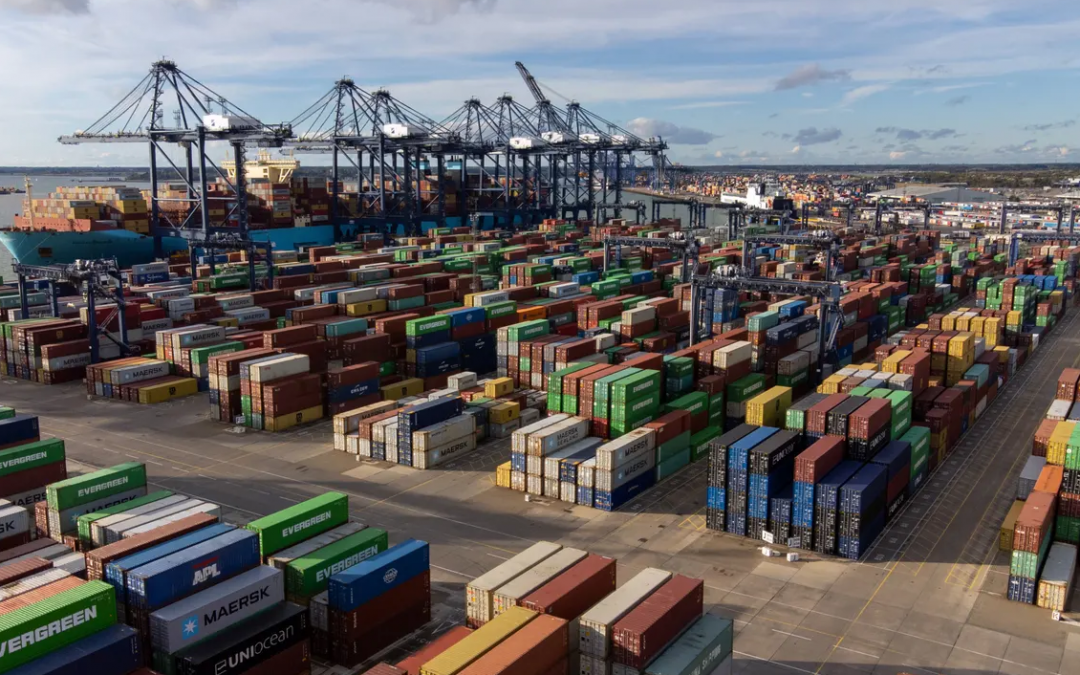Upcoming strikes at the UK ports of Felixstowe and Liverpool have left the already stressed container market braced for further disruption.
With delays commonplace in the container freight market, owing to inland logistical issues, mainly focused on a lack of truckers and rail cars, these delays are expected to further increase the delays felt by importers globally.
“Planned strike will cause major issues in supply chain and port operations,” a logistics company source said. “Felixstowe is one of the biggest ports in UK, and if anything happens there, even bad weather, we feel the impact.”
Nearly half of the UK’s container volumes, some 4 million twenty-foot equivalent units, come through Felixstowe, and Liverpool handles around 900,000 TEUs annually. Planned strikes at Britain’s busiest ports are likely to further destabilize port operations and generate shock waves throughout Europe’s logistics and supply chain sector.
Around 1,900 dock workers are expected to go on strike at Felixstowe between Aug. 21 and Aug. 29 as they demand higher pay amid rising inflation. Similar action was announced at the port of Liverpool, with the dates yet to be decided, with around 500 port workers to go on strike over pay and working conditions.
Annually, around 2,000 ships call at Felixstowe and around 720 at Liverpool, so if a backlog develops, ships may bypass the affected ports and reroute UK-bound cargo to nearby ports in Europe. This could not only result in added costs and serious logistical issues but would also worsen congestion problems on the Continent.
Critical point for container freight
This news comes at a critical point for the European container freight market, with low Rhine levels impacting inland container movements on the Continent.
“We can expect carriers to divert vessels to other ports, but let’s see if they will be able to cope,” another logistics company source said.
Ports in Europe, especially Hamburg and Rotterdam, are already struggling with chronic congestion, long dwelling cargoes and high yard density.
Freight rates from Asia to the North Continent and UK have been trending downward, but they are still higher than pre-pandemic levels. Further disruptions on the supply side could end this bear run.
Strikes have been taking place across North Europe this summer, including Hamburg and Antwerp, causing logjams and disruptions to maritime trade.
No relief for trans-Atlantic trade
The logjams have also affected European freight bound for North America, compounded by continued port congestion on the US Atlantic Coast.
“Europe is still super super tight,” a US-based freight forwarder said, adding that “trans-Atlantic is worse than trans-Pacific right now” as congestion and unusually strong demand point to rate increases in September.
PCR9 — North Continent-to-East Coast North America — was assessed Aug. 16 at $8,500/FEU, just below the record high of $8,700/FEU seen in June.
“We are still seeing some void sailings on the lane, but a lot of trans-Atlantic capacity is tied up at USEC ports,” a trans-Atlantic carrier source said.
There were 29 vessels at anchor or adrift outside the Port of Savannah Aug. 17, Platts Flow ship and commodity tracking software from S&P Global Commodity Insights showed.
Source: Hellenic Shipping News






